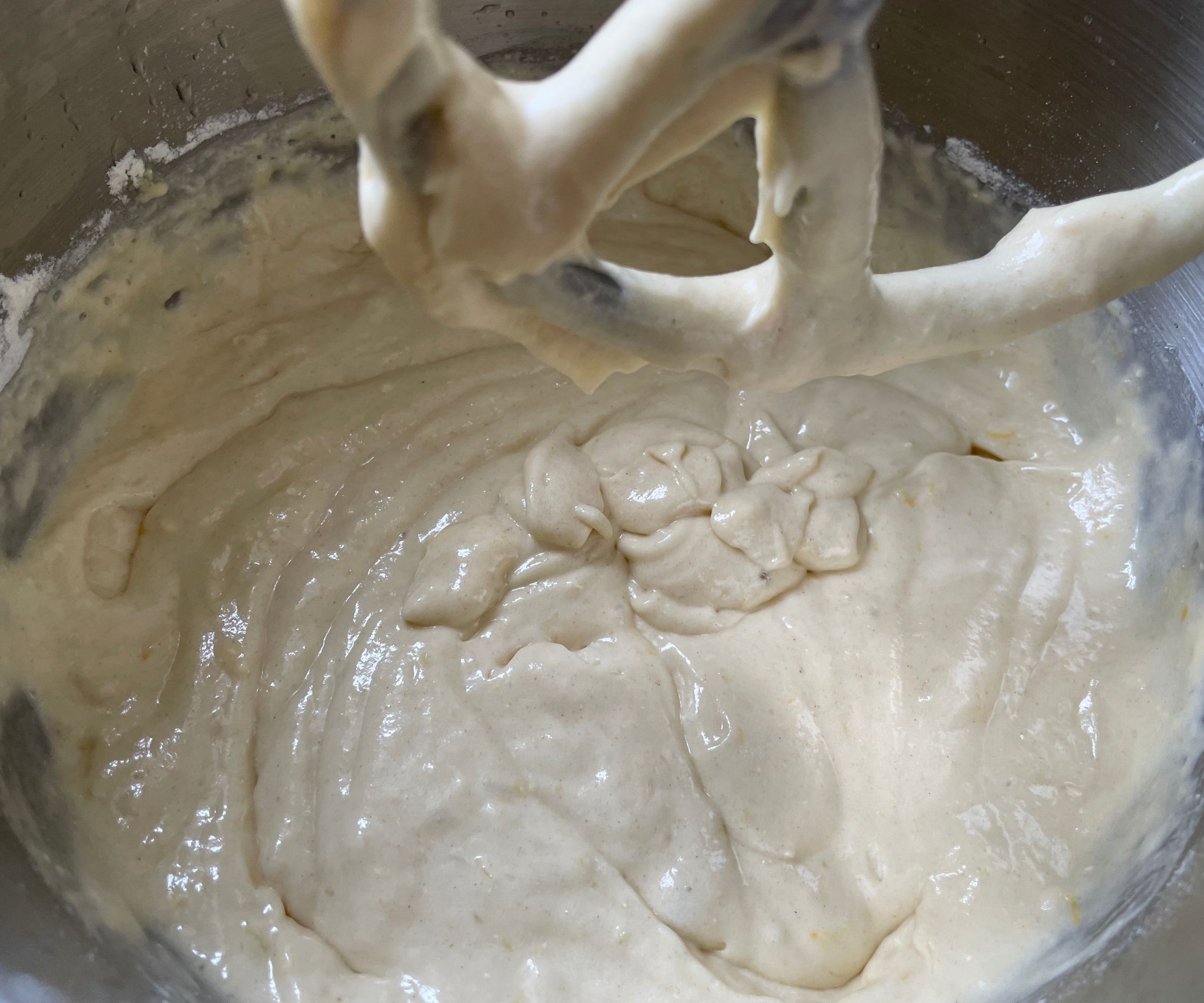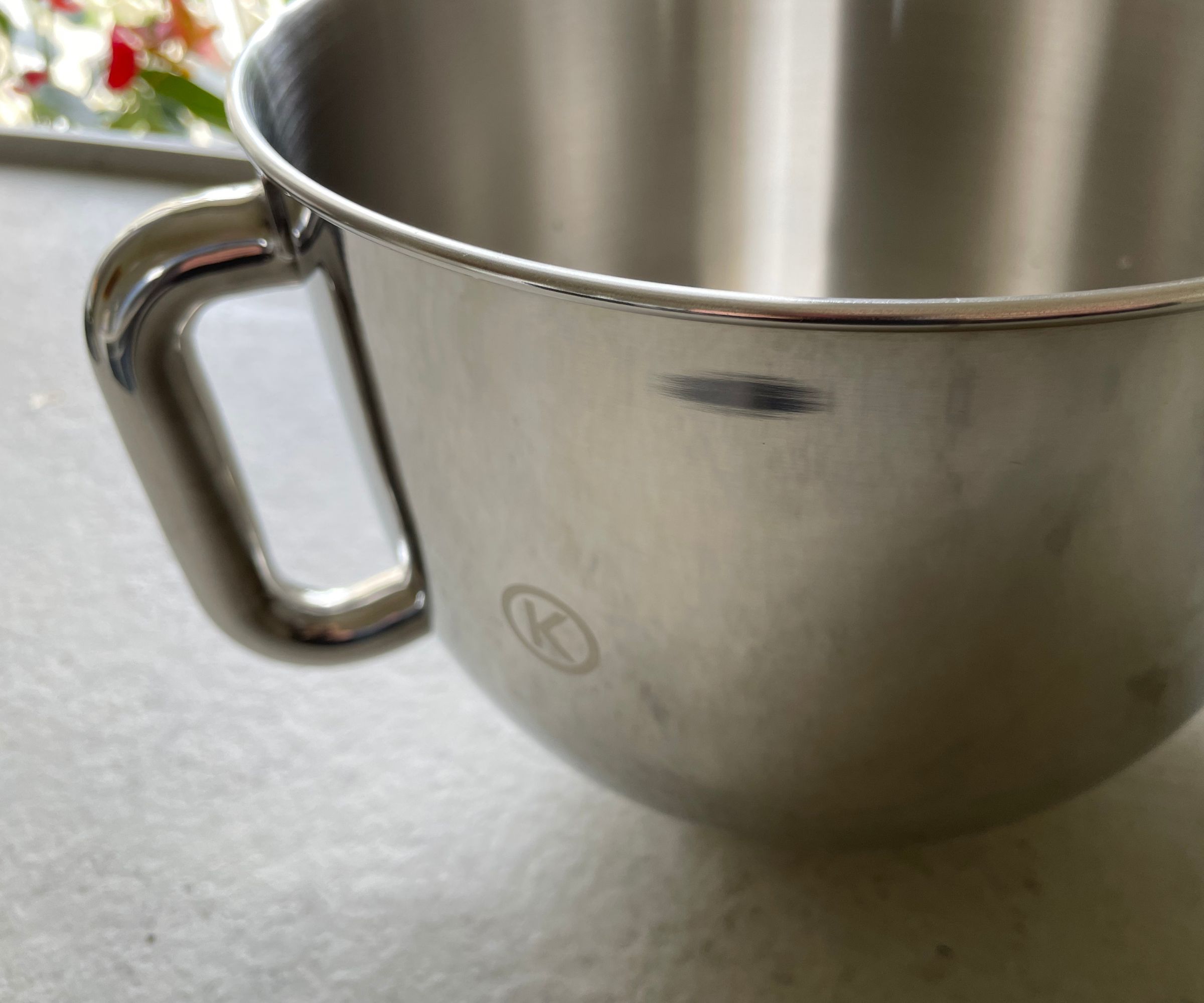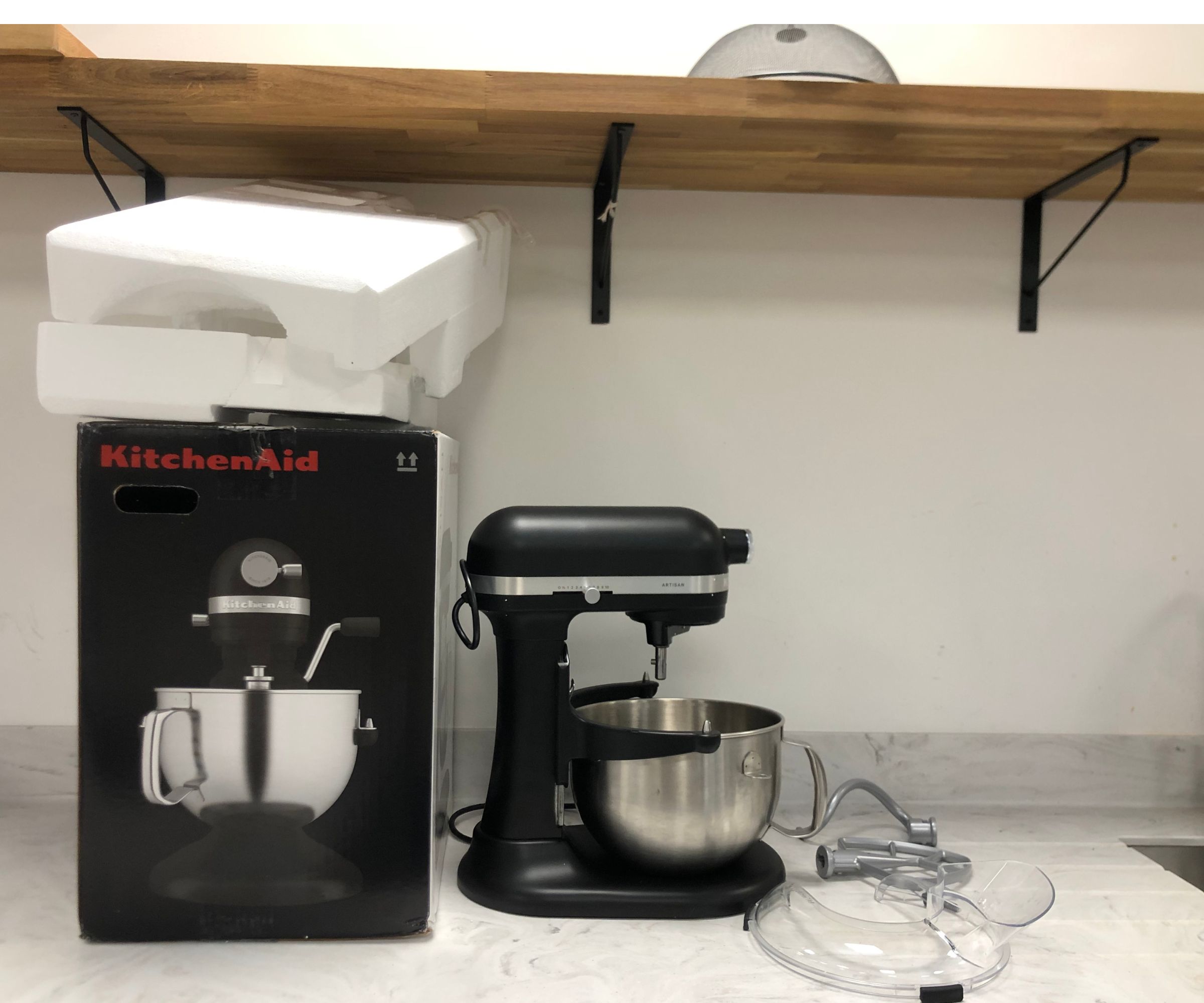
The Kenwood kMix Stand Mixer is one of the most powerful, versatile, and reasonably priced models that the brand has put on the countertop. In fact, it's earnt a spot in some very prestigious kitchens, including ours.
There’s a whole group of bakers who will tell you that the kMix is, in actual fact, the best stand mixer on the market. It’s the one that they occasionally use on Bake Off, it’s a top competitor to KitchenAid, and it’s competitively priced.
With a reputation like that, it’s no wonder that I have received so many requests for a review of the Kenwood kMix. At long last, I’ve got my baking paws on one. So, here’s everything you need to know about KitchenAid’s famous rival.
Specifications

Unboxing

The Kenwood kMix arrives, as most stand mixers do, with a fair amount of clobber. You'll get a reasonably large box, which is packed with polystyrene and plastic, designed to keep the shiny stand mixer as sparkly as it looks on the scene (and in your dreams). The packaging does its job, but it's mostly not recyclable, so you'll need to prep your bins for a big load of waste.
Non-recyclables aside, this looks stunning. It's a sleek, stainless steel marvel. You'll get the K-beater, dough hook, whisk, and splash guard that comes as standard with most stand mixers as well as a small spatula. Not many brands will send a spatula too, but it's a very neat, nice touch to have sent with your packaging. It's also actually very much needed, as this doesn't always whisk right to the edge and bottom of the bowl, so there'll be some scraping to do.
Who would it suit?

If you’re a busy baker who needs more power and more capacity than traditional stand mixers can offer, this is a brilliant stand mixer. The deep, 5-litre bowl has seemingly endless amounts of space. I’ve made two loaves of bread dough, enough cake batter for 48 cupcakes, and whipped more cream than usual care to tell my GP about in this.
Whilst that sounds like a capacity that could get heavy and inconvenient to store, Kenwood has done some neat styling. The handle makes the bowl easy to handle and pour from; the stand mixer looks great on display; and it packs neatly away into the cupboard if you have some deep, spacious, low ones too.
Whilst the capacity, power, and reputation of the kMix makes it an obvious choice for experienced bakers, don't let this put you off if you're new to it all. Lots of people who start baking really want the KitchenAid name on their counter, but I'm here to let you know that Kenwood are just as good (if not better according to some of our experts) and you can save money by opting for one of these too.
What is it like to use?

A lot of the mechanisms on the Kenwood will be familiar to all stand mixer owners. The bowl twists into place on the base and comes with a useful handle for pouring mixture and holding the bowl. The head is a tilt-back function that works using a spring, so you push it back until it locks into a secure place.
You’ll get three basic attachments which all push and fix onto the stand mixer head. It’s very simple.
Test 1: cake mix

The first test that I put all stand mixers through is baking a cake. It’s not just because I love cake that I do this, the whole process tests out the machine’s ability to cream butter and sugar as well as how the mixer can incorporate wet and dry ingredients.
I made a simple chocolate cake with the beater. My slightly hard, geometric cubes of butter were beaten into a smooth, fluffy mix of butter and sugar, before I added in my flour, eggs, cocoa powder, and vanilla. You can see from the picture that there wasn’t a single sugar crystal left unwhipped.
When I went to empty my mix into a baking tin, I started to see some pale, buttery spots where the K-beater hadn't quite managed to scoop up the butter and sugar from the bowl. This is where the spatula comes in: I whizzed it around the sides and bottom, clearing off the remainder, before I set the stand mixer's head back down and let it mix the butter and sugar through the batter.
After this, the mix was well and truly ready to bake. I twisted the bowl out of place, gripped the (extremely useful) handle, and poured my mix into the tin. The rest of the process (baking and eating) is really out of the kMix's control, but it's worth noting nonetheless. This rose and baked really well, the crumb of the cake was nice and fluffy: the perfect slice.
Test 2: bread dough

The next test that we put all our stand mixers through is making bread dough. I pushed the dough hook into place and added 500g of flour, 7g of yeast, a pinch of salt, and 300 ml of hand-hot water and oil.
The mixture always looks quite sloppy to begin with, but it should come together well. As expected, the dough became smooth, firm, and elastic within five minutes of the dough hook working its way around the bowl. As with the cake dough, there was a little flour dust at the bottom of the bowl, but it quickly incorporated into the mix.
When I lifted the bread dough out of the bowl and gave it a knead by hand, it stretched with the perfect amount of give and bounce. I’ve used faster stand mixers, but the results from this are still pretty good.
Test 3: whipped cream

The whisk attachment on the Kenwood is impressive (and probably my favourite feature). The big, wide tines of the whisk look powerful — and they are. I poured 500ml of double cream into the bowl and left the whisk on speed setting five, which is the upper end of the spectrum. Within four minutes, the cream had whisked into thick peaks and then split. I added some milk and used the whisk on a slower setting to work this back to thick, fluffy whipped cream and the Kenwood did it with complete elegance.
I followed this up by using some vegan cream to see how the Kenwood could handle some more difficult, temperamental ingredients and the results were really impressive still. The vegan cream whipped up slightly slower, but it still looked good after five minutes of whisking.

Cleaning

Kenwood says that the bowl and attachments are dishwasher safe, but I like to err on the side of caution with these things. Dishwashers can ruin stainless steel and push whisks out of shape. Using warm soapy water, I could get a great clean of the bowl and attachments. The stainless steel is robust enough to withstand some scrubbing with wire wool and more abrasive fabrics, which you might need if you accidentally leave the bread bowl on the side for the flour and water to set like cement (not that I do that often, I promise).
The rest of the machine looked pretty smart. I’d still recommend giving it a wipe down and clean after use, but this is a very simple and quick piece of maintenance that you can get away with skipping every so often.
How does it compare?

Most people compare Kenwood’s stand mixers to the KitchenAid Artisan 4.7L Stand Mixer— not just because they’re both used in the Bake Off tent. It’s aimed at more serious bakers who want an extra bit of power, capacity, and some extra features. Having used both, they’re very similar. I think the Kenwood struggled a little more to incorporate ingredients at the rate that the KitchenAid does, so it’s marginally slower, but you can achieve equally good results in relatively comparable times.
The only other point of real difference (aside from the money) is that the KitchenAid comes in more colours, so it has more of an aesthetic appeal. I don’t mind the Kenwood, but it’s certainly more modern and blocky. So, if you want to save money and you don’t mind compromising on aesthetics and speed, the Kenwood is perfect. If you’re happy to splurge for a bit of countertop eye candy, the KitchenAid will certainly appeal.
Should you buy it?

Budding bakers looking for quality at a reasonable price will appreciate what the Kenwood kMix has to offer. It’s technically one of the best stand mixers on the market, it just comes up relatively large and a little functional-looking on the counter.







